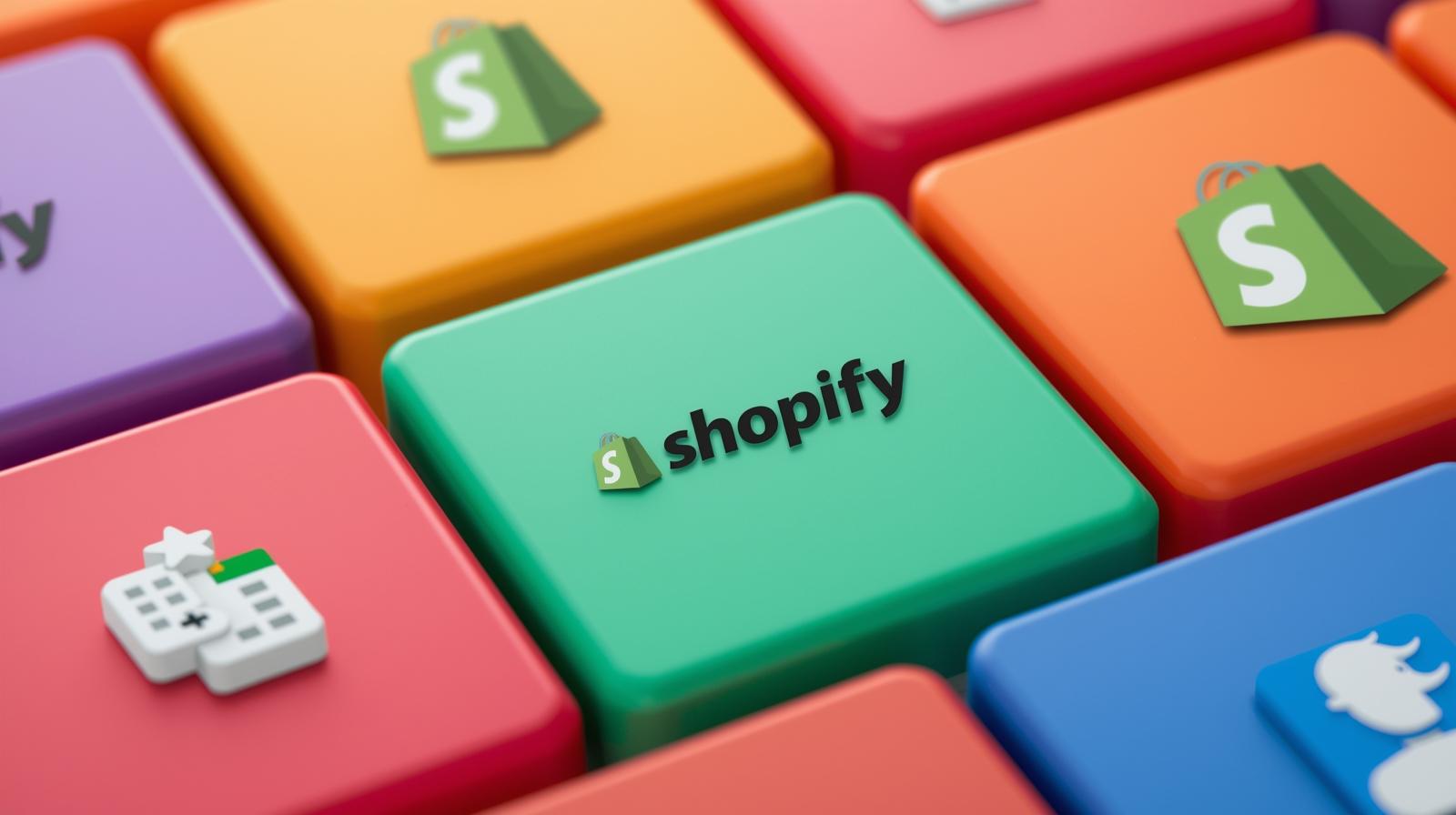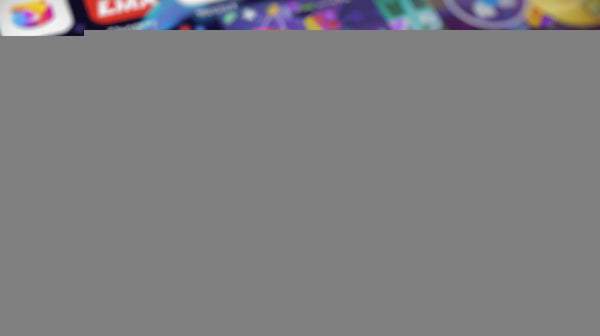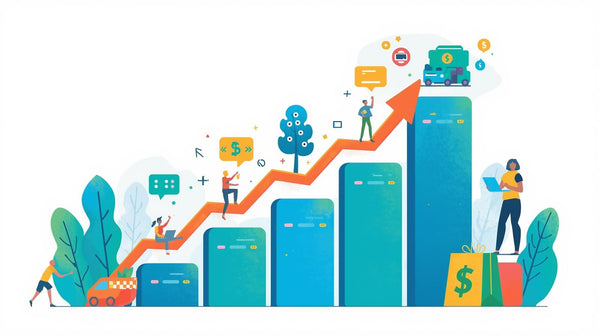What Is a Block in Shopify?
A block in Shopify is essentially a building unit of your online store’s design. These blocks are modular content elements things like text, images, buttons, videos, testimonials, or product showcases that live inside sections of your theme.
The easiest way to picture it is to think of blocks as Lego pieces. Each one is small on its own, but when arranged together, they create the full design of your storefront. You can add, remove, or rearrange these blocks to fit the look and flow you want, without needing coding skills.
For example, inside a homepage "Hero Section," you could insert an image block for the banner, a text block for the headline, and a button block for your call-to-action. Each block works like a moveable piece of the puzzle, giving you granular control over your store’s appearance.
Why this matters: Shopify blocks empower merchants to customize their storefronts on demand. Instead of waiting days for a developer to make small design adjustments, you can log into your Shopify dashboard, drag and drop elements, and instantly preview how they look. This drastically reduces dependency on outside help and makes your store more adaptable.
Real-world scenario: Imagine you’re running a weekend flash sale. Instead of calling your developer, you can add a promotional banner block, drop in a countdown timer block, and rearrange your homepage to highlight the sale at the very top all in under 10 minutes.
Insight: Blocks put design power directly into the hands of store owners. The ability to experiment in real time means you’re no longer limited by technical bottlenecks. You can test different messages, visuals, and layouts quickly giving you a competitive edge in fast-moving ecommerce.

Why Blocks Matter in Ecommerce
Blocks might feel like a small detail inside Shopify’s theme editor, but they play a huge role in how your store performs. In ecommerce, speed, flexibility, and user experience can make or break sales and blocks give you all three.
1. Flexibility
Think about how often your store needs to adapt. A new product launch, a holiday campaign, or even just a small update like showcasing reviews. With blocks, you can swap content in and out instantly. No downtime. No developer invoices. Just drag, drop, and publish.
2. Speed
In ecommerce, timing matters. Running a limited-time offer? You can create a banner block in minutes instead of waiting weeks for custom development. That kind of agility helps small businesses punch above their weight and react to trends as fast as bigger brands.
3. Consistency
Good design is about trust. If your homepage looks polished but your product page feels clunky, customers notice. Shopify blocks keep branding uniform because you’re reusing elements across sections. Fonts, colors, spacing it all stays aligned.
4. User Experience
Shoppers today want content that’s easy to scan. Blocks let you break information into digestible chunks: an image block to grab attention, a text block for clarity, a button block for the next step. This keeps pages from feeling overwhelming and helps customers move smoothly through the buying journey.
5. Testing and Iteration
Blocks aren’t static they’re tools for growth. You can duplicate a product showcase block and test whether it performs better at the top of the page or lower down. You can try two different hero images for a week each and measure engagement. That kind of experimentation is how ecommerce stores evolve from good to great.
Example in action:
A fashion store running on Shopify wants to spotlight different categories. One week they highlight “New Arrivals” at the top with an image + button block combo. The next week, they swap it out for a “Summer Sale” banner block with a countdown timer. Both changes take under 10 minutes, and the store learns which angle drives more clicks.
Insight:
In ecommerce, adaptability is your biggest strength. Blocks give you the freedom to move fast, stay consistent, and keep improving all without relying on code. That’s why they’re not just a design feature, but a core business advantage.

Types of Blocks in Shopify
Not all blocks are created equal. Depending on your Shopify theme, you’ll have access to a range of block types that let you mix and match for both storytelling and selling. Think of them as your toolbox each block serves a different purpose, and together they shape the customer journey.
1. Text Blocks
These are the bread and butter of your content. Headings, paragraphs, testimonials anything written goes here. The beauty of text blocks is their flexibility: you can use them to explain product benefits, add trust-building reviews, or write a compelling callout like “Free Shipping on Orders Over $50.”
2. Image Blocks
Ecommerce is visual first. With image blocks, you can showcase product shots, lifestyle photography, or seasonal banners. A skincare brand, for instance, can show a crisp close-up of a product jar, while a fashion store can place a full-width lifestyle photo that makes the shopper imagine themselves in the outfit.
3. Button Blocks
A store without clear calls-to-action is like a shop without doors. Button blocks drive visitors to the next step whether that’s “Add to Cart,” “Shop the Collection,” or “Learn More.” Placement matters here: sometimes moving a button higher on the page increases conversions dramatically.
4. Product Blocks
These blocks allow you to feature individual products, collections, or even related recommendations. A small candle brand might highlight a “Best Seller” block mid-page, while a bigger store could display an entire curated collection for a holiday.
5. Video Blocks
Video isn’t just nice to have anymore it’s expected. Video blocks let you showcase tutorials, unboxings, or brand storytelling. For example, a fitness brand can add a video block with a 30-second workout demo, showing customers the product in action rather than just describing it.
6. Custom HTML Blocks
For those who want more control, Shopify themes also support custom HTML blocks. These are perfect for adding advanced features like third-party widgets, countdown timers, or even embedded forms. They give merchants the ability to push design beyond what’s available by default.
Insight:
The power of Shopify blocks lies in their variety. They aren’t just decoration they’re functional tools. By mixing text, visuals, calls-to-action, and even video, merchants can balance branding and sales, building stores that are both creative and conversion-driven.

When to Use Blocks in Shopify
Blocks shine when used with intention. They’re not just filler elements; they’re strategic tools that help you keep your Shopify store fresh, relevant, and conversion-driven. Here’s when and how to make the most of them:
1. Seasonal Campaigns
Ecommerce thrives on timely updates. Whether it’s Black Friday, Valentine’s Day, or Back-to-School, blocks let you adjust your store instantly. Add a banner block for flash sales, a countdown timer block for urgency, or a product block showcasing limited-edition items. The best part? Once the campaign ends, you can replace or remove these blocks in seconds without altering your entire theme.
2. New Product Launches
When a fresh product drops, visibility is everything. Instead of burying it in a collection page, feature it front-and-center using a product block on the homepage. Pair it with an image block or video block for a storytelling angle. This way, customers immediately know what’s new, and you capture attention before they scroll away.
3. Homepage Refreshes
A homepage that looks the same for months feels stale, both for returning customers and for search engines. Blocks make it easy to rotate content. Swap out a testimonial block, update hero banners, or highlight new bestsellers. These small refreshes create the perception of a living, updated brand without a costly redesign.
4. Landing Pages
Blocks are the fastest way to build targeted sales funnels inside Shopify. For example:
-
Add a text block to frame the offer.
-
Insert a product block with featured items.
-
Follow with a testimonial block to build trust.
-
End with a button block linking directly to checkout.
In less than an hour, you can spin up a complete campaign-specific landing page something that used to take weeks of coding.
5. Storytelling Sections
Modern customers care about stories, not just products. Blocks let you combine images, text, and video into branded storytelling layouts. A fashion brand might use blocks to tell the story of sustainable sourcing, while a fitness store could use them to highlight customer transformations. This type of content deepens brand connection and supports long-term loyalty.
6. A/B Testing and Experimentation
Blocks make testing painless. Want to know if a “Shop Now” button converts better above the fold or below it? Duplicate the block and test variations. Because changes are quick, you can run experiments without hiring a designer or disrupting the store’s overall look.
7. Highlighting Seasonal or Local Events
If your business ties into local events say, a festival or pop-up shop blocks are a fast way to promote them. A map block or event image block ensures customers see updates without needing a dedicated microsite.
Pro Tip
Think of blocks as living components of your store rather than static placeholders. Rotate them regularly. Even small changes a new background image, an updated headline, or a refreshed testimonial signal to customers (and search engines) that your store is active and thriving.
Insight
Merchants who update blocks strategically don’t just keep their store visually appealing they also keep it performing. In ecommerce, relevance is revenue, and blocks are your easiest way to stay relevant.

Marketing with Blocks
Shopify blocks aren’t only design tools they’re marketing engines. By placing the right content in the right block, you can turn casual browsers into paying customers while building trust and authority. Here’s how to leverage them effectively for ecommerce marketing:
1. Highlight Offers and Promotions
Blocks are perfect for spotlighting discounts, bundles, or limited-time deals.
-
Use a banner block to showcase a “20% Off This Weekend” message.
-
Pair it with a button block leading directly to the sale collection.
-
For bundles, a product block displaying the entire set makes the offer more attractive.
Because you can schedule or replace blocks easily, this strategy keeps your promotional messaging always fresh.
2. Build Social Proof with Testimonial or Review Blocks
Trust sells. By placing testimonial blocks or review blocks strategically on product pages and homepages, you validate your store through real customer voices.
-
Example: A skincare store can place a review block with before-and-after photos.
-
Example: A fashion brand can highlight customer Instagram posts through image blocks connected to UGC (user-generated content).
This not only increases conversion but also improves time spent on your site.
3. Content Blocks for SEO and Education
Ecommerce is not just about selling it’s about informing. Content blocks let you add micro-blogs, product care guides, or FAQs directly within your store layout.
-
Example: A shoe store can use a block for “How to Care for Leather Boots.”
-
Example: A supplement store might use a block to answer common health-related questions.
This strategy doubles as an SEO booster because fresh, keyword-rich content embedded in blocks helps pages rank higher.
4. Urgency Tactics with Countdown Timer Blocks
Urgency is one of the most effective motivators in ecommerce. Adding a countdown timer block to a sale page creates FOMO (fear of missing out).
-
Example: “Sale Ends in 02:14:36” displayed under a banner block pushes visitors to act fast.
-
Example: A preorder product launch can show how much time is left before availability closes.
Done right, urgency blocks can significantly lift conversion rates.
5. Cross-Selling with Related Product Blocks
Never leave a product page as a dead end. By inserting related product blocks under every listing, you invite customers to explore more.
-
Example: A customer looking at a camera might see related lenses, tripods, and bags.
-
Example: A clothing buyer might see accessories that complete the outfit.
Cross-selling blocks increase average order value (AOV) without pushing customers too hard.
6. Seasonal or Thematic Marketing Blocks
For holidays and special occasions, themed blocks make your store feel timely.
-
Add a holiday banner block during Christmas.
-
Insert a Valentine’s Day product block with curated gift sets.
-
Use color-coordinated blocks to reflect seasonal branding.
These changes create urgency, relevance, and excitement keeping your store aligned with customer expectations.
7. Storytelling Through Blocks
Marketing isn’t always about selling directly. Sometimes it’s about connection. Use image blocks, video blocks, and text blocks to tell your brand story your mission, process, or behind-the-scenes moments. This builds emotional loyalty, which is harder to break than price-driven loyalty.
Pro Tip
Don’t overload your store with too many marketing blocks at once. Balance is key. Every block should serve a clear purpose drive a sale, build trust, or provide value. Too many messages at once can overwhelm and reduce clarity.
Insight
Smart merchants don’t just design with blocks they market with them. By treating blocks as mini marketing campaigns, you transform your store from static visuals into a dynamic sales and storytelling platform.

Blocks vs. Sections
To understand Shopify’s design system, you need to know the difference between sections and blocks. Both play a role in building your storefront, but they serve different purposes.
What Are Sections?
Sections are big containers that define major parts of your store’s layout. Think of them as the “framework” of a page.
-
Examples: Homepage Hero, Featured Products, Blog Section, Footer, Slideshow.
-
Role: They set the overall structure of a page, deciding how space is divided and what kind of content fits inside.
What Are Blocks?
Blocks are the smaller building pieces that live inside sections. They add detail, variety, and precision.
-
Examples: Headings, text paragraphs, images, buttons, videos, or product cards.
-
Role: They give merchants control over the fine-grain elements that make up the bigger section.
Why the Difference Matters
-
Structure vs. Precision: Sections give you the skeleton; blocks let you add the muscles and details.
-
Flexibility: Without sections, your site would feel unstructured. Without blocks, it would feel too rigid. Together, they strike a balance.
-
Speed & Control: Sections speed up page creation, while blocks allow micro-adjustments without code.
Real-World Example
Imagine building a homepage section called “Featured Products.”
-
Inside this section, you can add:
-
Multiple product blocks to display bestsellers.
-
A text block to describe the collection.
-
A button block to link directly to the full catalog.
-
Maybe even a video block for storytelling.
-
The result: A section that’s structured but flexible, telling a complete story while maintaining brand flow.
How Sections and Blocks Work Together
-
Sections = Where content goes.
-
Blocks = What content goes there.
-
Combined = A fast, customizable system that even non-developers can use effectively.
Pro Tip
Think of your site like a magazine: sections are the articles, while blocks are the headlines, photos, and captions inside those articles. Both are necessary to create a polished and engaging experience.
Insight
Merchants who understand the difference between sections and blocks unlock the real power of Shopify themes. Instead of feeling limited, they gain both structure and precision making their storefronts look professional, dynamic, and conversion friendly.
Case Studies – Brands Using Blocks
Big or small, successful Shopify brands use blocks not just for design but for strategy. Here are some examples:
GymShark
-
How they use blocks: Their homepage is filled with a mix of motivational images, athlete stories, and product showcases. Instead of a flat catalog, they weave lifestyle and branding into block-based layouts.
-
Impact: Customers feel inspired by the community before they even shop, turning browsing into an emotional experience.
Allbirds
-
How they use blocks: Sustainability is central to their brand. They use text + image blocks to highlight eco-friendly materials and production stories, often pairing them with shoppable product links.
-
Impact: Their blocks don’t just sell shoes—they educate customers and strengthen brand trust.
Kylie Cosmetics (another strong example)
-
How they use blocks: They rely heavily on product and countdown blocks during launches. The urgency created by timers and “just dropped” product showcases keeps fans engaged.
-
Impact: This block strategy fuels hype and drives conversions during limited-time drops.
Indie Shopify Brands
-
How they use blocks: Smaller stores often lack brand recognition, so they use testimonial blocks, FAQs, and review highlights to build trust quickly.
-
Impact: Instead of flashy code or heavy customization, they win by making credibility front and center.
Insight
The common thread here is not fancy coding it’s strategic use of blocks to tell a story. Whether it’s inspiration (GymShark), trust (Allbirds), hype (Kylie Cosmetics), or credibility (indie brands), blocks are the storytelling tools behind high-performing Shopify storefronts.
Pro Tip
When studying successful brands, don’t just copy their look analyze which blocks they emphasize and why. Then adapt that strategy to your store’s goals.

Final Thoughts – Building Smarter with Blocks
Blocks may look simple, but they’re one of the most powerful tools Shopify gives merchants. They balance creativity, flexibility, and functionality. With smart usage, you can design dynamic pages, test conversions, and keep your store fresh without hiring developers for every small change.
At EcomSpiders, we help Shopify businesses design, customize, and optimize their block-based storefronts. Whether you want a simple refresh or a complete migration, our team makes it seamless. If you’re ready to upgrade your store with smarter design and strategy, reach out to us—we offer a free consultation to plan your next move.






0 comments